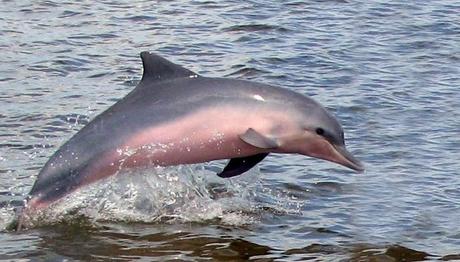
The Amazon river dolphin, also known as the pink river dolphin or boto, lives only in freshwater. It is found throughout much of the Amazon and Orinoco river basins in Bolivia, Brazil, Colombia, Ecuador, Guyana, Peru, and Venezuela. It is a relatively abundant freshwater cetacean with an estimated population in the tens of thousands. However, it is classified as vulnerable in certain areas due to dams that fragment and threaten certain populations, and from other threats such as contamination of rivers and lakes. The Pink River Dolphin is widely distributed throughout much of the Amazon and Orinoco river basins.Normally it can be found in lowland fast flowing, whitewater rivers, clearwater or blackwater rivers. It is also present in the largest tributaries, lakes, confluences and seasonally flooded forests.Like its relatives elsewhere, the boto's habitat is threatened by river development projects. Hydroelectric and irrigation schemes separate rivers in bodies of waters, which may reduce the species' range and its ability to breed.The boto is a pale pink colour, and is different from other dolphins in that it has a flexible neck, which allows it to move its head left and right.It has a long snout, a rounded head and small dorsal fin, with overall length varying from 2 to 3m.Poor in vision, it relies on an internal sonar system to manoeuvre under water and find food.
 India, The Amazon river dolphin, The Pink River Dolphin, vikasacharya
India, The Amazon river dolphin, The Pink River Dolphin, vikasacharya
